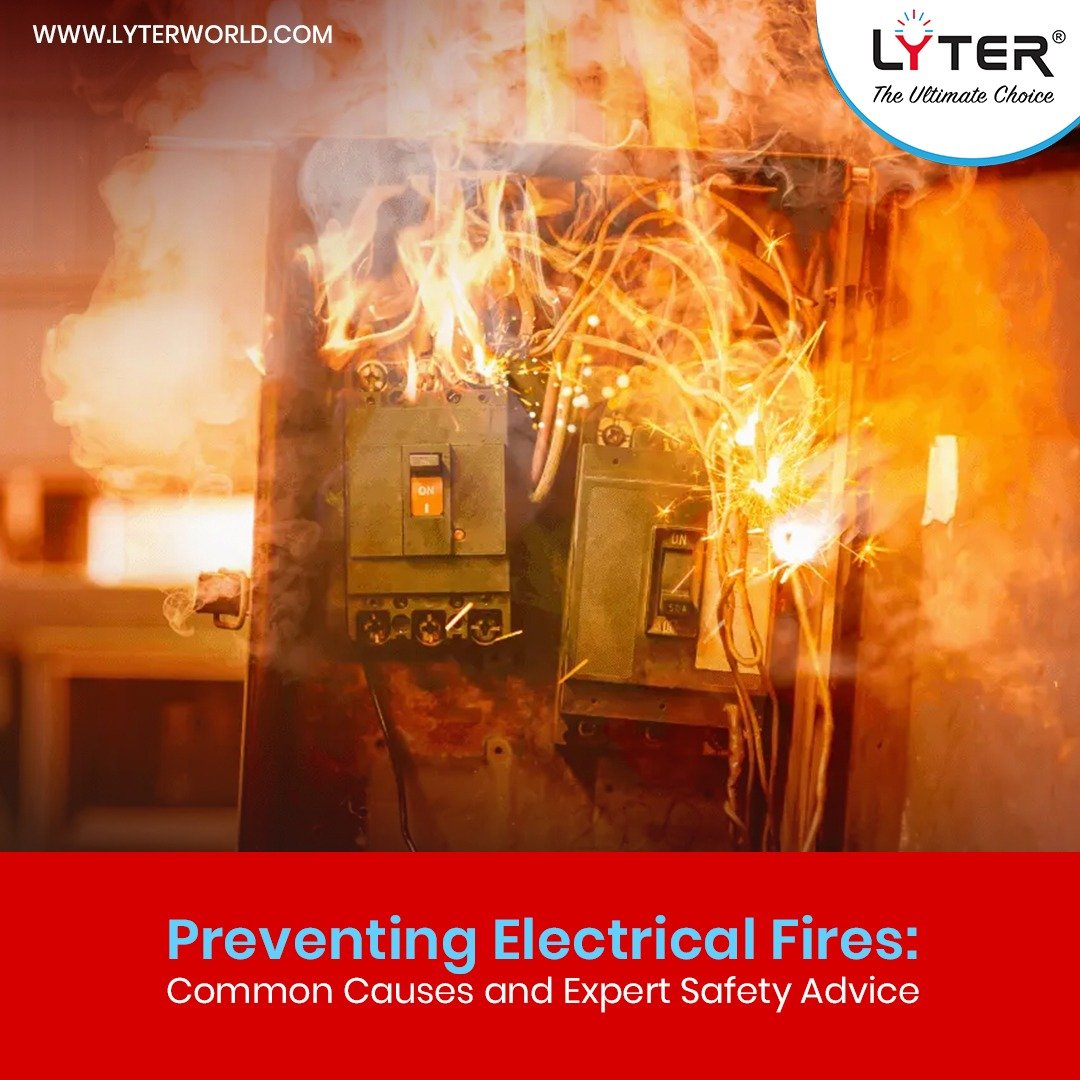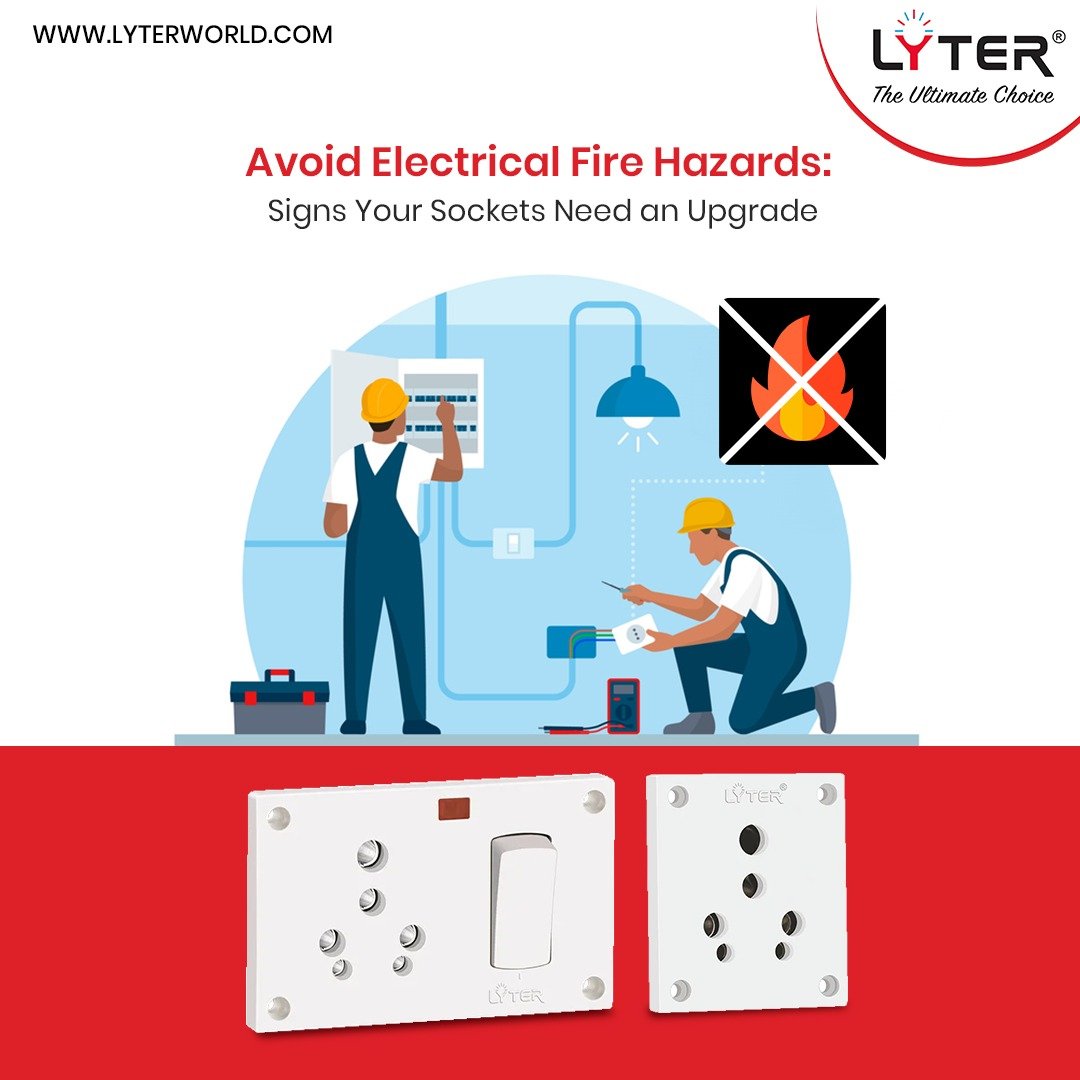A sudden sizzle. A faint smell of burning plastic. And before you can react – it’s smoke everywhere.
Electrical fires are among the most dangerous and least anticipated disasters in residential and commercial spaces. They often start silently, behind walls or inside appliances, and spread rapidly when unnoticed. What begins as a simple overload or faulty plug can escalate into full-blown destruction if not addressed early.
But the good news is that such electric fire hazards can be avoided with vigilance and proactive prevention measures. In this blog, we’ll break down the common causes leading to electrical fires, how to identify risks, and safety tips you can follow to prevent disaster or respond correctly if it happens.
Factors Causing Electrical Fires
1. Overloaded Circuits & Power Strips
We think it is convenient to plug multiple devices into one outlet using power strips but this convenience can turn into a catastrophe if you’re not careful. Cheap or low-quality strips without surge protection often can’t handle high power loads, especially from heating appliances or computers.
Over time, these can overheat and trigger an electric short circuit fire, especially if the internal wiring is already compromised or the outlet is loose. Avoid daisy-chaining multiple strips, and always check the strip’s wattage rating before plugging in heavy-duty devices.
2. Faulty Outlets, Sockets & Plastic Gang Box
Loose wiring, aged outlets, or sockets housed in a cracked or brittle plastic gang box can create resistance, generating heat. That heat can spark combustion, especially if there’s surrounding dust, paper, or drapery.
Homes with outdated electrical systems, where worn-out fittings or substandard boxes don’t meet current safety standards, are even more critical.
3. Frayed or Damaged Cables
Appliance cords with exposed wires or bent prongs are a critical risk factor. These damages cause arcing where electricity jumps between two points, leading to sparks and potential electric fire cases.
Inspect cords regularly. If a wire looks worn or scorched, replace it immediately. Don’t wrap damaged cables with tape as a fix – it’s a fire risk, not a quick repair.
4. DIY Electrical Work
Violating basic electrical fire safety rules with poorly executed DIY fixes, like open splicing, mismatched wires, or improperly secured faceplates can be catastrophic at times. These shortcuts may work temporarily but pose long-term risks by destabilizing your entire circuit.
Let licensed electricians handle upgrades or replacements, especially in high-load zones like kitchens or workshops.
Signs of a Potential Electrical Fire
- Outlets or switches feel warm to the touch
- A burning or fishy smell from electrical areas
- Flickering lights when you turn on appliances
- Frequent tripping of circuit breakers
- Cracks in the plastic gang box or blackened outlets
Noticing any of these? It’s time to get an inspection done.
Safety Tips During Electrical Fires
Even with precautions, accidents can happen. If an electrical fire does break out, here’s what you can do:
1. Cut the Power If It’s Safe
Your first move should be to turn off the main power supply – only if you can do so safely and without touching any fire-damaged area. This prevents any chances of any further sparks or short-circuiting.
2. Never Use Water
Throwing water on an electric short circuit fire is dangerous – it conducts electricity and may worsen the situation. Use a Class C fire extinguisher designed specifically to blow off electrical fires.
3. Evacuate and Call Emergency Services
Don’t try to fight the fire alone. If it begins to spread or becomes smoky, evacuate immediately and dial emergency services. Alert neighbors if you’re in a building or shared space.
4. Don’t Reconnect Devices Prematurely
Even after the fire is extinguished, avoid plugging devices back in until the electrical system has been inspected and cleared by an expert electrician.
Fire Prevention Habits To Save Lives
- Replace every brittle or discolored switch & socket with modern fire-retardant ones
- Use ISI-marked, surge-protected power strips only
- Unplug high-heat devices when not in use (iron, toaster, heater)
- Schedule annual inspections, especially in older homes or buildings
- Avoid running cables under rugs or furniture, where heat can build silently
Choose Safety Over Shortcuts
Electrical fires don’t happen out of nowhere. They hide behind switches and wires, waiting for that one moment of neglect. Whether it’s a worn cable, a cracked switch, or an overloaded power strip, the signs are usually there; you just need to notice them promptly.
Safety starts with awareness and action. From using the right gear to knowing when to unplug, you can avoid turning these fire risks. Invest in quality electrical fire safety products from leading suppliers such as Lyter.
Get your electrical setup inspected. And when in doubt, call an expert. Because when it comes to fire, even a second too late can be one too many.








